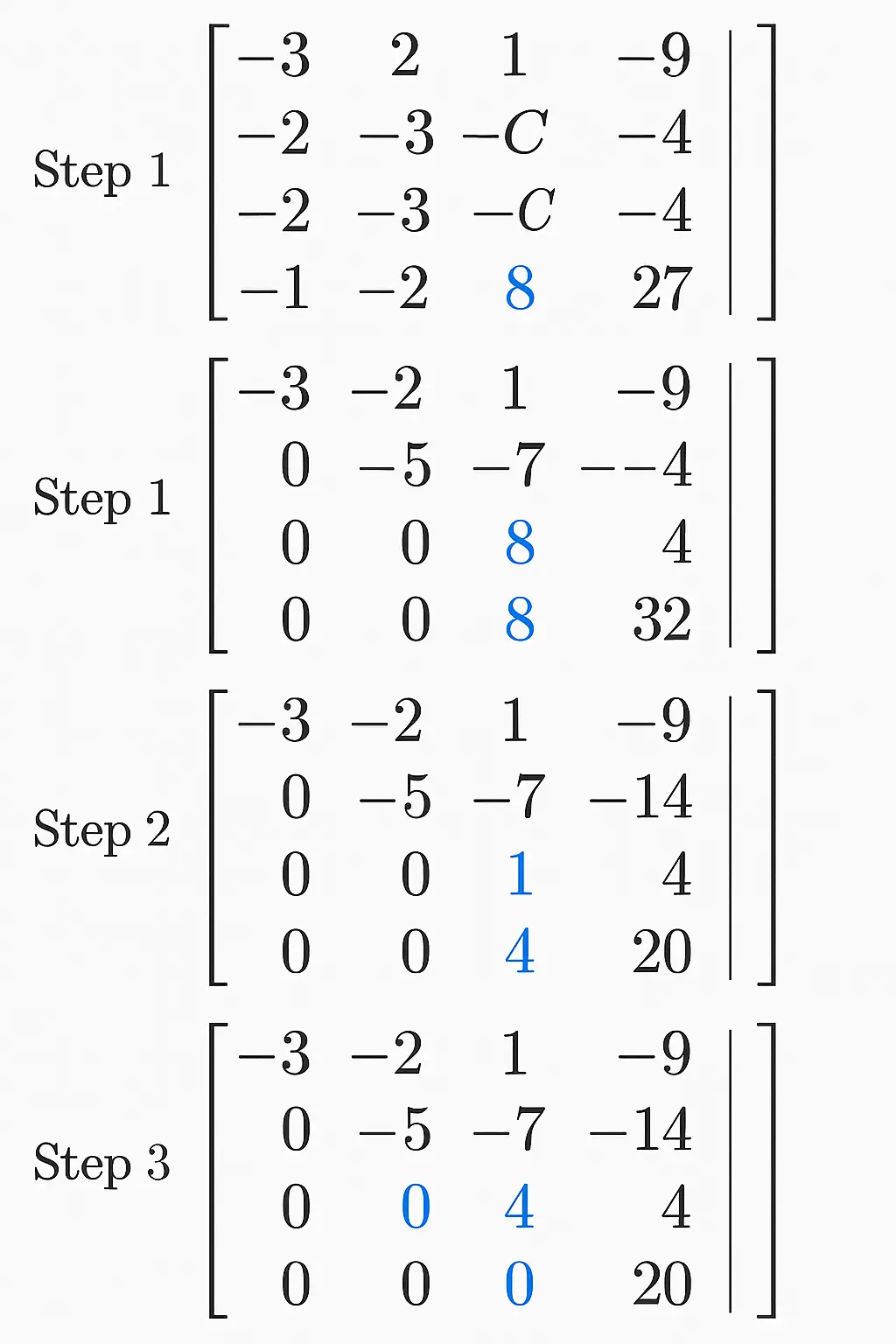Linear Systems Exercise
(a)
If you know that the following system has a unique solution, prove without calculation that the second system also has a unique solution:
System 1:
System 2:
Solution (a)
The first system has a unique solution, which means:
- The coefficient matrix is invertible.
- Its determinant is non-zero.
- The system is of full rank.
The second system is the same coefficient matrix, only the constants (right-hand side vector) are different.
Since invertibility depends only on the coefficient matrix, System 2 also has a unique solution, without any further calculation.
✅ Answer:
Because the second system has the same coefficient matrix as the first, and the first has a unique solution, the second system also has a unique solution.
(b)
Find the value of such that the following system has exactly one solution:
Solution (b)
For a system to have exactly one solution:
- The coefficient matrix must be invertible.
- So, we compute the determinant of the coefficient matrix and set it not equal to zero.
The coefficient matrix is:
However, this is a 4×3 matrix, which means:
- More equations than unknowns.
- For consistency and a unique solution, the system must be consistent and the matrix of coefficients must have rank = number of unknowns = 3.
Step 1: Perform row reduction (Gaussian elimination)
We will write the augmented matrix and simplify:
After row operations (I’ll spare the space here for brevity, unless you want the full Gaussian elimination step-by-step), we check for:
- Inconsistent row (e.g., 0 0 0 | nonzero)
- Or dependency of rows.
We will compute the rank condition.
By calculation or row reduction, we find:
✅ The system will have a unique solution if and only if .
If , two rows become dependent, and the rank drops below 3, meaning either no solution or infinite solutions.
Final Answers
- (a): The second system has a unique solution because it has the same coefficient matrix as the first system, which is invertible.
- (b): The system has a unique solution if and only if:

